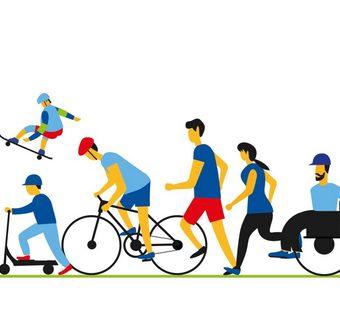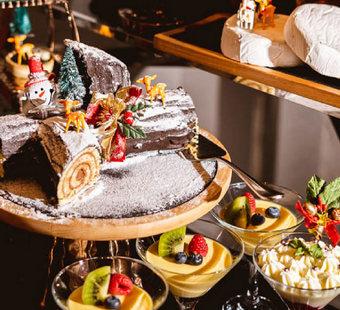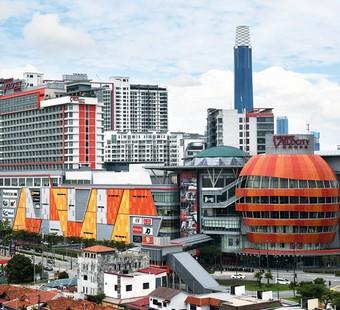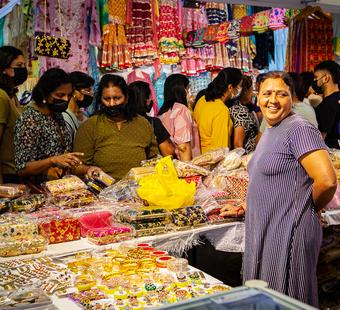Shopping districts like KLCC and Bukit Bintang have been the stars of the city centre for many years now. Yet the popularity of one of the oldest shopping districts in Kuala Lumpur, Jalan Tuanku Abdul Rahman or affectionately known as Jalan TAR, has not dimmed, especially amongst local shoppers.
Formerly known as Batu Road, Jalan TAR is probably KL’s first high street, where many of the retail outlets continue to be family-run businesses going back several decades. Malaysians have long flocked to this area synonymous with fabrics and textiles. “I like to shop at Jalan TAR because I can find a variety of headscarves here,” said Ain, a college student. Wedding planners and local fashion designers also frequent this “Garment District” for the vast range of fabrics, latest styles and trends available at attractive prices. Jalan TAR is also known for its Saturday night market when the road is closed to traffic between 5pm to 10pm, and visitors can sample local delicacies and find an array of other local products.
However, this is no comparison to the Ramadan Bazaar when the street is swarming with hundreds of booths selling traditional outfits, headscarves and accessories. Shoppers come from everywhere, some travelling from neighbouring states to buy new clothes and other goods for Ramadan and Hari Raya Aidilfitri. Everything builds up towards the end of the fasting month, when many businesses extend their trading hours to cater for the last-minute shopping rush.
The atmosphere is electrifying with festive songs blasting from speakers, vendors shouting to attract the attention of shoppers to their stalls, and the delicious aroma from the food stalls. Helena Sagir, a banker at Jalan Raja Laut said, “I enjoy checking out the variety of food and fantastic bargains on clothes at the Ramadan Bazaar here.” Suresh Kumar, a copywriter, enjoys the antics of the shop attendants. “The men will wear the baju kurung and tudung, while calling out to customers. Funny fellows!” Suresh said.
Apart from the main thoroughfare, the surrounding area of Jalan Masjid India is just as lively and vibrant, especially leading up to the Deepavali festival. A city banker, Suguna Subramaniam said, “I come to Masjid India area to shop for Indian clothes, accessories and snacks. I like some of the funky accessories sold there.”
Besides shopping, Malaysians choose Jalan TAR for food. Capital Café is popular among office workers for breakfasts of kopi peng, half-boiled eggs and toast with margarine and kaya, and in the evenings for satay. Suresh recalled, “Among my favourites is Restoran Insaf for their biryani which has maintained the same taste and quality over many years,” while Helena shares her top pick as Zam -Zam Restaurant. “Try their yummy murtabak!” she enthused. Of course, no one should miss the Coliseum Café, once a favourite haunt of British colonials, and legendary for its Hainanese chicken chop and sizzling steaks.
The area has not rested on its laurels as competition increased from newer shopping areas, underpinned by high-end malls such as Suria KLCC and Pavilion. In 2015, one of the area’s longstanding businesses opened Jakel Mall, the world’s largest standalone textile mall in CapSquare, which was renamed Jakel Square. Sogo, a Jalan TAR stalwart of 23 years, also completed a seven-year refurbishment process few years ago
The continually reinventing Jalan TAR area looks ready to take advantage of the inevitable growth that will come from the rejuvenation of nearby Pudu and Imbi, spearheaded by the Tun Razak Exchange (TRX) and the Bukit Bintang City Centre (BBCC).
Photo Credit : Tourism Malaysia








